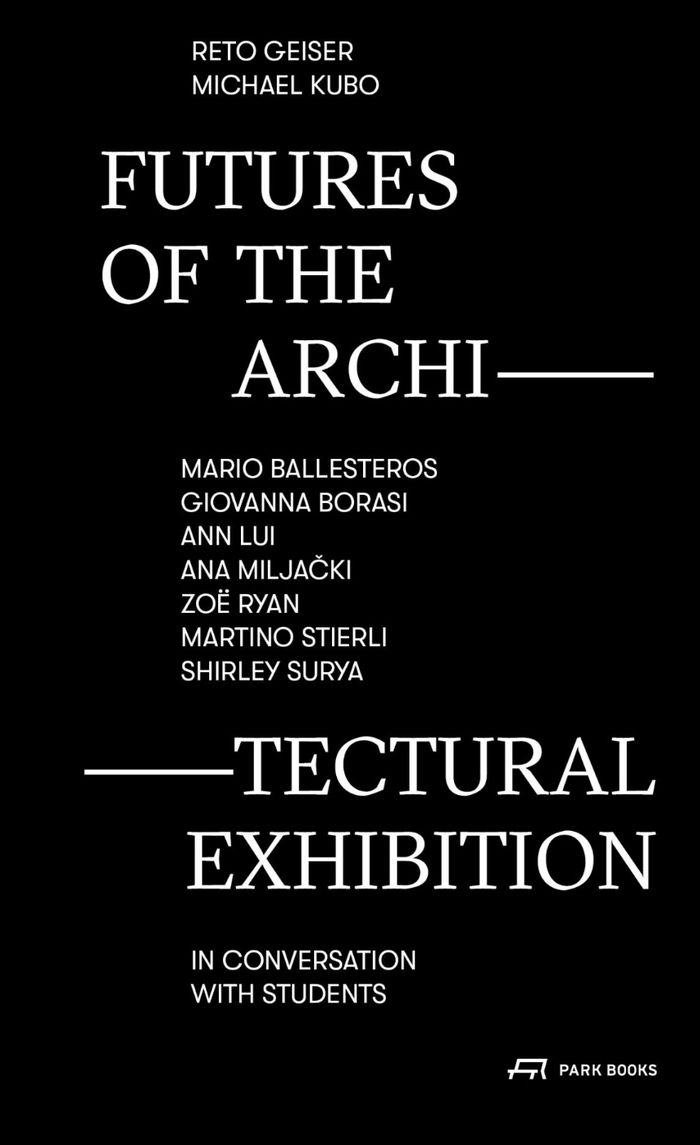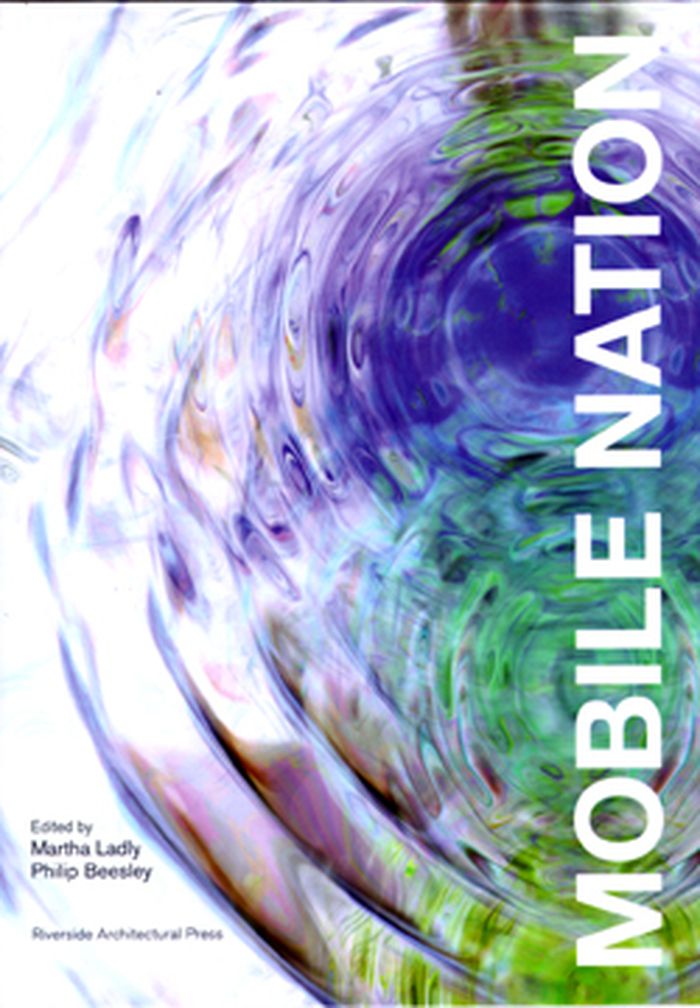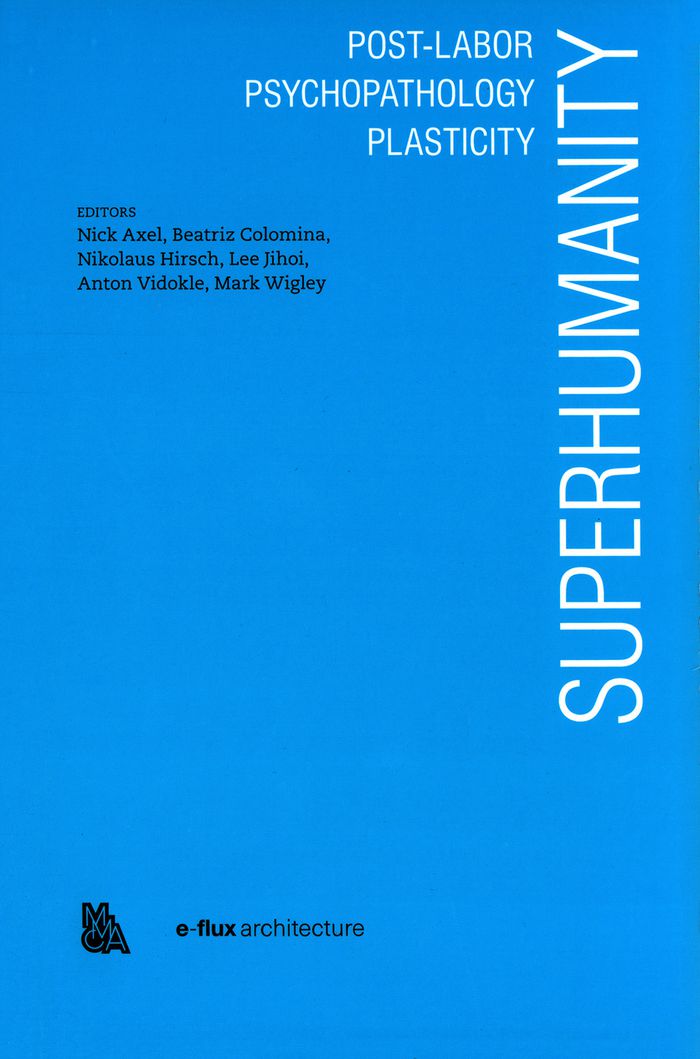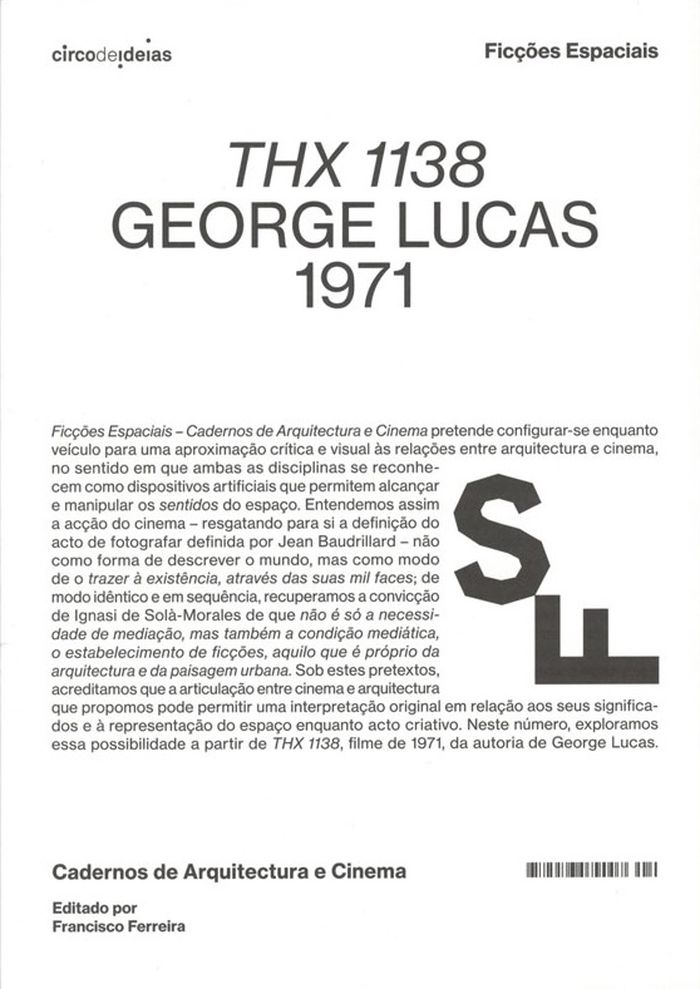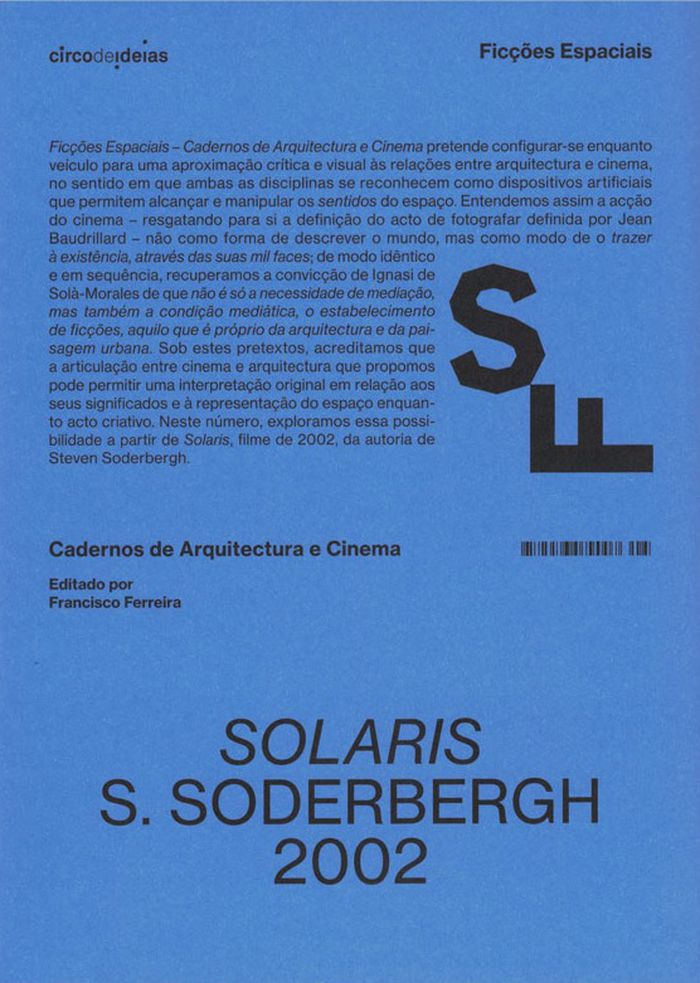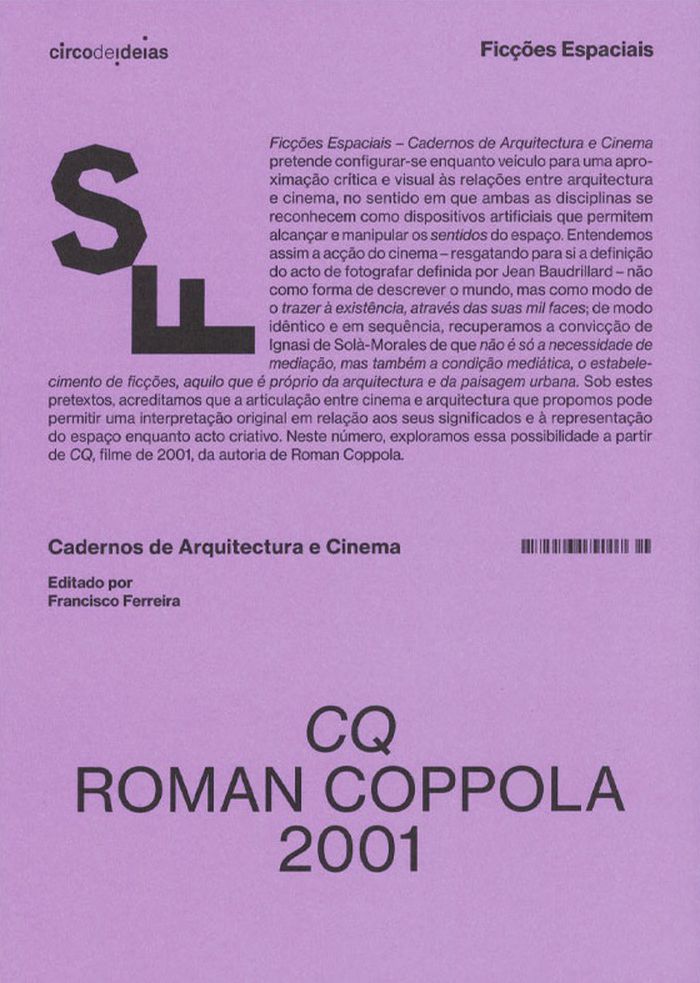$45.00
(available in store)
Summary:
In recent years, the specific formats and challenges of exhibiting architecture and design, both built and speculative, have often been used as critical devices for identifying, communicating, and convening the public around shared matters of concern. These have increasingly included urgent questions of equity and justice, labor, gender, race, class, community, and(...)
Futures of the architectural exhibition: Five conversations on the display of space
Actions:
Price:
$45.00
(available in store)
Summary:
In recent years, the specific formats and challenges of exhibiting architecture and design, both built and speculative, have often been used as critical devices for identifying, communicating, and convening the public around shared matters of concern. These have increasingly included urgent questions of equity and justice, labor, gender, race, class, community, and lifestyle in relation to spatial issues of density, economy, policy, infrastructure, climate, and sustainability. This book records a discussion of critical approaches to the representation of architecture through conversations with seven contemporary curators working inside and outside of the museum. Mario Ballesteros (Archivo Diseño y Arquitectura), Giovanna Borasi (Canadian Center for Architecture), Ann Lui (Future Firm), Ana Miljacki (Critical Broadcasting Lab, MIT), Zoë Ryan (ICA, University of Pennsylvania), Martino Stierli (Museum of Modern Art), and Shirley Surya (M+, Hong Kong) speculate on the specific challenges and potentials of exhibiting space.
Museology
The dissolution of buildings
$27.95
(available to order)
Summary:
Advocating an architecture that is "the opposite of global action," architect Angelo Bucci's work responds to the topography of the city and to its urban environment. In a lecture delivered at Columbia University's Graduate School of Architecture, Planning and Preservation, Bucci discusses work designed with his firm SPBR, projects that span from the scale of the house to(...)
The dissolution of buildings
Actions:
Price:
$27.95
(available to order)
Summary:
Advocating an architecture that is "the opposite of global action," architect Angelo Bucci's work responds to the topography of the city and to its urban environment. In a lecture delivered at Columbia University's Graduate School of Architecture, Planning and Preservation, Bucci discusses work designed with his firm SPBR, projects that span from the scale of the house to the city. His built work is here accompanied by an excerpt from his doctoral dissertation, which explores how the devices available to architecture—and the sectional manipulation of groundplanes in particular—can mitigate some of the inequities and exclusions built in to the fabric of the contemporary city. An essay by Kenneth Frampton frames these projects within the rich lineage of Brazilian house design and members of the Paulista school such as Paulo Mendes da Rocha and João Batista Vilanova Artigas.
Architectural Theory
books
$39.95
(available to order)
Summary:
We're filling up the world with technology and devices, but we've lost sight of an important question: What is this stuff for? What value does it add to our lives? So asks author John Thackara in his new book, “In the Bubble: Designing for a Complex World”. These are tough questions for the pushers of technology to answer. Our economic system is centred on technology,(...)
In the bubble : designing in a complex world
Actions:
Price:
$39.95
(available to order)
Summary:
We're filling up the world with technology and devices, but we've lost sight of an important question: What is this stuff for? What value does it add to our lives? So asks author John Thackara in his new book, “In the Bubble: Designing for a Complex World”. These are tough questions for the pushers of technology to answer. Our economic system is centred on technology, so it would be no small matter if "tech" ceased to be an end-in-itself in our daily lives. Technology is not going to go away, but the time to discuss the end it will serve is before we deploy it, not after. We need to ask what purpose will be served by the broadband communications, smart materials, wearable computing, and connected appliances that we're unleashing upon the world. We need to ask what impact all this stuff will have on our daily lives. Who will look after it, and how? ”In the Bubble” is about a world based less on stuff and more on people. Thackara describes a transformation that is taking place now -- not in a remote science fiction future; it's not about, as he puts it, "the schlock of the new" but about radical innovation already emerging in daily life. We are regaining respect for what people can do that technology can't. In the Bubble describes services designed to help people carry out daily activities in new ways. Many of these services involve technology -- ranging from body implants to wide-bodied jets. But objects and systems play a supporting role in a people-centred world. The design focus is on services, not things. And new principles -- above all, lightness -- inform the way these services are designed and used. At the heart of In the Bubble is a belief, informed by a wealth of real-world examples, that ethics and responsibility can inform design decisions without impeding social and technical innovation.
books
April 2005, London
Design Theory
books
$32.99
(available in store)
Summary:
This book takes architectural history out of the realm of dreary textbooks into a world of dynamic design, succinct page-length essays and instructive sidebars. These graphic devices heighten the reader's ability to retain an impressive amount of information, even through a cursory reading. A brief run-through of the book's captions and sidebars provides a mini crash(...)
December 2001
The annotated arc, a crash course in the history of architecture
Actions:
Price:
$32.99
(available in store)
Summary:
This book takes architectural history out of the realm of dreary textbooks into a world of dynamic design, succinct page-length essays and instructive sidebars. These graphic devices heighten the reader's ability to retain an impressive amount of information, even through a cursory reading. A brief run-through of the book's captions and sidebars provides a mini crash course in the history of architecture. Incorporating more than 250 illustrations, The Annotated Arch draws on the very elements of architecture to craft a visual and textual approach to the subject that no ordinary textbook could match. From Stonehenge to the Eiffel Tower, from Flippo Brunelleschi to Frank Lloyd Wright, the language of architecture is clarified in five sections.
books
December 2001
Mobile nation
$35.95
(available to order)
Summary:
Mobile Nation explores the emerging field of mobile experience design. The papers in this anthology include essays on design theories and methods for locative technologies, devices, experiences, and games, featuring international scholars, researchers and industry experts.
September 2008, Waterloo
Mobile nation
Actions:
Price:
$35.95
(available to order)
Summary:
Mobile Nation explores the emerging field of mobile experience design. The papers in this anthology include essays on design theories and methods for locative technologies, devices, experiences, and games, featuring international scholars, researchers and industry experts.
The household box
$47.95
(available to order)
Summary:
The box contains practical and poetic ideas for transforming your life. With a huge array of signs and other communication devices, spectacular interior design features, as well as an 80-pages HOUSEHOLD MANUAL, which is packed with fun and games.
The household box
Actions:
Price:
$47.95
(available to order)
Summary:
The box contains practical and poetic ideas for transforming your life. With a huge array of signs and other communication devices, spectacular interior design features, as well as an 80-pages HOUSEHOLD MANUAL, which is packed with fun and games.
Children's Books
$39.95
(available to order)
Summary:
Focused on post-labor, psychopathology, and plasticity of human mind and body, this book introduces insight, critiques, and propositions in the area of “self-design,” ranging from design and architecture to science, media, history, philosophy, and contemporary art. The field of design has radically expanded. As a practice, design is no longer limited to the world of(...)
Superhumanity: Post-labor, psychopathology, plasticity
Actions:
Price:
$39.95
(available to order)
Summary:
Focused on post-labor, psychopathology, and plasticity of human mind and body, this book introduces insight, critiques, and propositions in the area of “self-design,” ranging from design and architecture to science, media, history, philosophy, and contemporary art. The field of design has radically expanded. As a practice, design is no longer limited to the world of material objects, but rather extends from carefully crafted individual looks and online identities, to the surrounding galaxies of personal devices, new materials, interfaces, networks, systems, infrastructures, data, chemicals, organisms, and genetic codes.
Architectural Theory
$12.00
(available in store)
Summary:
This book, published by Circo de Ideias, edited and authored by Francisco Ferreira, presents a critical and visual approach to George Lucas’s 1971 film THX 1138. "Space Fictions – Booklets on Architecture and Cinema (THX 1138. George Lucas, 1971)" is part of a collection developed as a space for reflection on the relationship between architecture and cinema, in the sense(...)
Space Fictions: Booklets on architecture and cinema (THX 1138. George Lucas, 1971)
Actions:
Price:
$12.00
(available in store)
Summary:
This book, published by Circo de Ideias, edited and authored by Francisco Ferreira, presents a critical and visual approach to George Lucas’s 1971 film THX 1138. "Space Fictions – Booklets on Architecture and Cinema (THX 1138. George Lucas, 1971)" is part of a collection developed as a space for reflection on the relationship between architecture and cinema, in the sense that both disciplines recognise themselves as artificial devices that make it possible to reach and manipulate the senses of space.
Architecture and Film, Set Design
$12.00
(available to order)
Summary:
This book, published by Circo de Ideias and edited by Francisco Ferreira, with an essay by Dietrich Neumann, presents a critical and visual approach to Steven Soderbergh’s 2002 film Solaris. "Space Fictions – Booklets on Architecture and Cinema (Solaris. S. Soderbergh, 2002)" is part of a collection developed as a space for reflection on the relationship between(...)
Space Fictions: Booklets on architecture and cinema (Solaris. S. Soderbergh, 2002)
Actions:
Price:
$12.00
(available to order)
Summary:
This book, published by Circo de Ideias and edited by Francisco Ferreira, with an essay by Dietrich Neumann, presents a critical and visual approach to Steven Soderbergh’s 2002 film Solaris. "Space Fictions – Booklets on Architecture and Cinema (Solaris. S. Soderbergh, 2002)" is part of a collection developed as a space for reflection on the relationship between architecture and cinema, in the sense that both disciplines recognise themselves as artificial devices that make it possible to reach and manipulate the senses of space.
Architecture and Film, Set Design
$12.00
(available in store)
Summary:
This book, published by Circo de Ideias and edited by Francisco Ferreira, with an essay by Alexandra Areia, presents a critical and visual approach to Roman Coppola’s 2001 film CQ. "Space Fictions – Booklets on Architecture and Cinema (CQ. Roman Coppola, 2001)" is part of a collection developed as a space for reflection on the relationship between architecture and(...)
Space Fictions: Booklets on architecture and cinema (CQ. Roman Coppola, 2001)
Actions:
Price:
$12.00
(available in store)
Summary:
This book, published by Circo de Ideias and edited by Francisco Ferreira, with an essay by Alexandra Areia, presents a critical and visual approach to Roman Coppola’s 2001 film CQ. "Space Fictions – Booklets on Architecture and Cinema (CQ. Roman Coppola, 2001)" is part of a collection developed as a space for reflection on the relationship between architecture and cinema, in the sense that both disciplines recognise themselves as artificial devices that make it possible to reach and manipulate the senses of space.
Architecture and Film, Set Design
